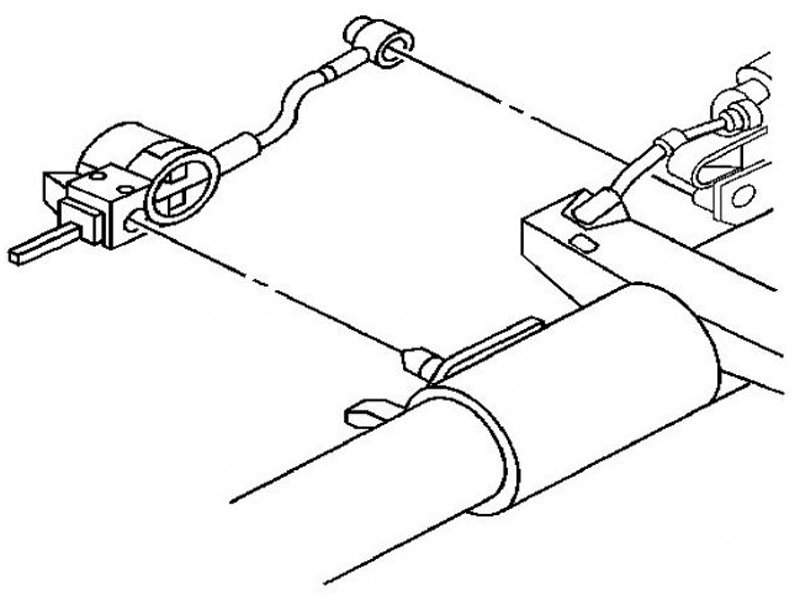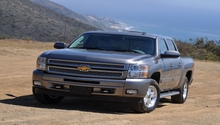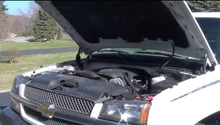Chevrolet Silverado: Why is My Ignition Locked?
Ignition lock cylinders are a security device that corresponds to a correctly sized key, and allows for electrical contact to be made inside of the ignition switch when rotated. Without this movement, the starter solenoid will not receive power and your truck's engine will not start.
This article applies to the Chevrolet Silverado GMT800, GMT900, and K2XX (1999-Present).
Inside the ignition lock cylinder is a series of tumblers that are designed to move only the amount matched by your key. Once the key is fully inserted, the ignition switch can be moved from the "off" to the "on" or "run" position. Silverados equipped with automatic transmissions have a shift interlock device that keeps your key in the locked position until the transmission is placed into park. The truck cannot be moved out of park again until the key is moved to the "on"/"run" position and the brake pedal is depressed. Between 2002 to 2003, Chevrolet quit using steering column locks in Silverados equipped with automatic transmissions. Silverados with manual transmissions retained this feature until manuals were no longer offered as an option.

Materials Needed
- Socket set
- Screwdriver set
- 1/4" and 3/8" ratchets
- Digital multimeter
- Steering column lock plate removal tool
- Teflon lock cylinder lubricant
Step 1 – Check condition of ignition lock cylinder and key
Over time, as the lock cylinder is turned and the key is inserted as well as removed many times, wear will occur. Once a certain point is reached, the tumblers inside of the cylinder will no longer be moved to the proper amount by the key.
Tumblers and the key itself can also become bent, creating a bind. Never forcibly turn or remove a key from a lock cylinder.
Dirt that becomes trapped in and around the cylinder will also create a bind. Periodically, apply a small amount of Teflon lock cylinder lubricant to help ensure proper operation.

Step 2 – Verify manual shift lever and brake light switch are working
Your shift lever uses a detent system to create the feel of shifting through each gear. Improper pulling and twisting of the lever can damage the detents, creating a bind. When this occurs, removal of the plastic shrouds covering the steering column will expose the assembly for inspection.
Unlike a non-electronic transmission, your shift lever is not mechanically connected to the transmission. Instead, a solenoid mounted to the transmission case is used. On the steering column is a sensor that reads the position of the shift lever. This sensor transmits the position to the shift interlock solenoid on the steering column and the shift solenoid on the transmission. If the shift interlock solenoid or the wiring to and from the solenoid is defective, you will be unable to remove the key once the ignition lock cylinder is in the "off" position.
A brake light switch can be found on your brake pedal assembly. This switch not only signals your brake lights to turn on, but your powertrain control module also uses it to allow you to switch out of park. To test the switch, use an ohm meter and record the resistance reading of the switch. The reading should be at or less than 0.3 ohms.

Step 3 – Verify steering column lock is working properly
This step only applies to the Silverados with manual transmissions.
Inside the steering column is a rod that locks the steering wheel in place by sliding into a machined slot on the shaft lock shield. This rod can become lodged in place if it's not retracted fully by the spring once the ignition lock cylinder recognizes the correct key has been inserted. When this happens, pressure applied to the ignition switch will prevent it from turning.
Like the shift lever, the plastic covers surrounding the steering column will have to be removed to watch the column locks operation as the lock cylinder is turned.

Related Discussions
- Silverado Key Won't Turn - ChevroletForum.com
- Key Will Not Turn in Ignition - ChevroletForum.com
- Key Stuck, Truck Won't Turn Off - ChevroletForum.com






